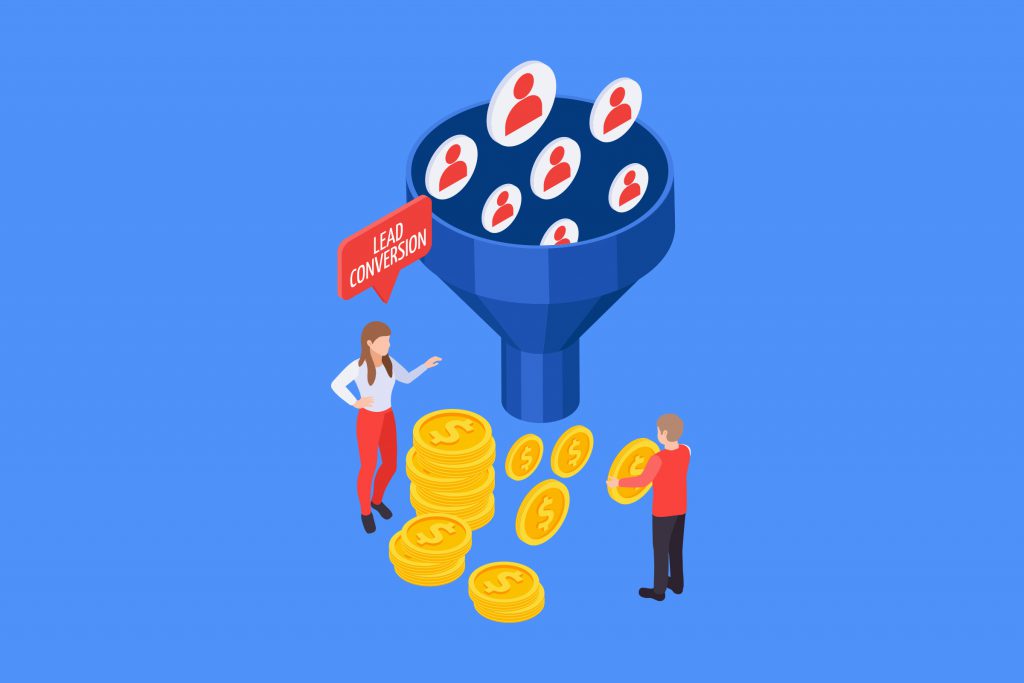The success of your business depends mainly on the success of your lead conversion. When you market your brand, prospective leads are compelled to visit your website for more information on your products or services–but having huge amounts of traffic to your site isn’t enough if you are unable to convert them into loyal customers.
Therefore, even as you hire lead generation experts to help you generate more leads for your website, you need to think about converting your leads. So, what is a good lead conversion rate? Let’s dive in.
What Is Lead Conversion?
Simply put: lead conversion is the process of converting your leads into customers through various methods, such as behavior automation, email nurturing, retargeting, and more. However, you shouldn’t confuse lead conversion with lead generation for websites–lead conversion follows a successful lead generation process. So, if you own a startup, the first question you should ask yourself before you think about lead conversion is: How do startups generate leads?
Understand that your leads will go through various stages before they become customers. They’ll start as leads, then become marketing-qualified leads (MQLs), and then become sales-qualified leads (SQLs). Therefore, you have to nurture your leads at each stage of conversion, creating opportunities for each lead that will encourage them to take action and move closer to becoming loyal customers.
Please note that no two businesses use the same lead conversion process because each will create a conversion route that is tailor-made for its leads. Nevertheless, there are certain key elements that a good conversion process should have to offer a successful lead conversion rate.
What Is a Successful Lead Conversion Rate?
As noted above, a good conversion rate should help you to convert your leads into loyal customers. One of the easiest ways to know if your conversion rate is successful is to analyze your sales–you can’t brag about your impressive lead conversion rate if you aren’t making enough sales. Therefore, you need to find ways to optimize your conversion rate to ensure that every lead that visits your website proceeds to make a purchase.
However, you shouldn’t beat yourself up for not getting a 100% conversion rate, because it’s not possible. Across sectors, the average lead conversion rate for landing pages is 2.35%, but the top 25% of the landing pages have a 5.31% lead conversion rate or higher. So, you need to strive to be in the top 10%, because these landing pages reach a conversion rate of at least 11.45%.
A recent study of thousands of accounts running Google Ads with a total of $3 billion in yearly expenditure showed that most of these accounts are enjoying lead conversion rates that are two or three times higher than the average. So, if you want to have a good conversion rate, you have to aim higher than the average, so that you will stay ahead of your competitors in terms of sales and profits.
How to Know If Your Lead Conversion Rate Is Good
First, you need to understand the lead conversion rate formula. The most common formula is: Count (Leads) / Count (Visitors). This means that if your site generates an average of 50,000 leads (visitors) every month, and you can convert 2,000 of them, then your lead conversion rate = 2,000 leads / 50,000 visitors = 40%.
Please note that the success of a lead conversion varies by industry and type of device. Nonetheless, the global average conversion rate for regular web pages is 2.4%, while that of an average landing page is 4%. When you are monitoring your lead conversion rate, you should track the changes over time using a line chart, and a line chart isn’t possible, you can track your conversion rates using a bar chart. A bar chart requires you to segment the conversion rate data by the sources of the leads or advertising channels.
Finally, it’s important to understand that people will visit your website for various reasons–some will be following a link to a certain topic, while others will come to your site after clicking on your targeted ads. Some may already understand the benefits of your products or services and are therefore ready to make a purchase immediately, while others want to learn more about what you are offering before they make a decision. So, you have to treat each lead thoughtfully and find the most effective ways of encouraging them to try your products or services.



